! This Build is for a challenge called Classic Jet Challenge ¡
Hello and Welcome to another Plane build.
And todays build is the F-94 Starfire!
History
Air Defense Command
The primary users of the F-94 were the squadrons of Air Defense Command (ADC), eventually equipping 26 squadrons of interceptors. The first F-94As were assigned to the 325th Fighter-All Weather Group at McChord AFB and Moses Lake AFB, Washington. It replaced the propeller-driven F-82F Twin Mustangs that were in use by its 317th, 318th, and 319th squadrons. The F-82s had been pressed into interceptor service in 1949 after the Soviet Union displayed the Tupolev Tu-4 strategic bomber, a reversed-engineered version of the B-29 Superfortress, some of which had landed and were impounded in the Soviet Far East during World War II. The F-82Fs proved to be an excellent day/night all-weather interceptor, with long range, but it lacked any logistics support which resulted in a chronic shortage of parts. The jet-powered F-94As, however, had shorter legs than the F-82s and relied more on Ground Control Interception Radar (GCI) sites to vector them to intruding aircraft.
27th FIS F-94C 51-13555 at Griffiss Air Force Base, New York
Once the 317th was equipped in the Pacific Northwest, ADC then re-equipped its 52d Fighter-All Weather Group at McGuire AFB, New Jersey which also flew F-82Fs and provided air defense of the Northeastern United States. However, it was during this period that Air Defense Command began dispersing its Fighter-Interceptor squadrons away from their parent groups to individual bases. During 1950 and 1951, ADC sent F-94As to squadrons of the 56th Fighter Group in the upper Midwest to replace its obsolete F-47 Thunderbolts, F-51 Mustangs, as well as F-80 Shooting Star and F-86A Sabre day jet interceptors.In March 1951, upgraded F-94Bs were received from Lockheed by the 33d Fighter Wing at Otis AFB, Massachusetts, replacing their F-86A Sabres, although the last squadron of the wing didn't replace its Sabres until May 1952. Three Federalized Air National Guard units, the 121st FIS (DC ANG), 142nd FIS (Maine ANG), and 148th FIS (Pennsylvania ANG), received F-94Bs while they served on active duty during the Korean War call-up to defend the airspace over Washington, D.C. However, these F-94s were retained by the USAF when these ANG squadrons returned to State control in 1952. Also seven more squadrons received F-94Bs as part of the roll out from Lockheed.
Three additional squadrons (84th, 436th, and 479th FIS) received F-94Bs in 1953, although these were passed down from squadrons receiving F-94Cs. Beginning in the summer of 1951, the F-94Cs began coming off the production line, with six squadrons being equipped by May 1954. Five more squadrons were equipped in FY 54-55 which ended the production run for the interceptor by Lockheed.
Far East Air Force
In the Pacific, Far East Air Force (FEAF) equipped three squadrons with F-94Bs, and Air Defense Command deployed the 319th Fighter-Interceptor Squadron to South Korea to provide a jet air-defense umbrella over the Seoul area.
The first shipment of F-94Bs arrived in Japan in March 1951, being assigned to the 339th Fighter-All Weather Squadron at Johnson Air Base. Also arriving was a mobile training unit from Chanute AFB, Illinois to provide transition training for the F-82G Twin Mustang pilots into the new jet interceptor. In May, F-94Bs began to re-equip the 68th FAWS at Itazuke Air Base, while rotating pilots and radar operators to Suwon Air Base in South Korea where they flew combat missions over North Korea with the F-82Gs as well as air defense alert over Seoul. In July, the 4th FAWS began receiving the F-94As at Naha Air Base, Okinawa. Training for the squadrons proceeded through the summer and in August, the first Fifth Air Force Operational Readiness Test was held by the 339th FAWS with the F-94. Various issues with the aircraft, as well as issues with the Ground Control Interception radar graded the test as "fair".
Formation of 4th FIS F-94Bs, Naha AB, Okinawa
68th Fighter-Interceptor Squadron F-94B 51-5358 at Suwon AB, South Korea
In early December 1951, the appearance of Communist MiG-15 jets over Seoul raised alarm bells at FEAF Headquarters. The only interceptors over Seoul were about six F-82Gs along with some Marine Grumman F7F Tigercats. FEAF ordered the 68th to move two F-94Bs to Suwon to supplement the F-82Fs. The Twin Mustangs along with the F7Fs would continue their armed reconnaissance and weather missions against North Korean targets, while the F-94s would fly interception missions over South Korea and the Yellow Sea. Care was taken to not fly the Starfires anywhere that a crash would allow the communists access to the wreck if it were shot down.
During January 1952, ADC was ordered to deploy the 319th Fighter-Interceptor Squadron from the 25th Air Division at Larson AFB, Washington to Japan, and to relieve the 68th FIS at Itazuke. A detachment of the ADC squadron was sent to Misawa AB to fly air defense missions over Northern Honshu and Hokkaido against any intruding Soviet aircraft from Sakhalin Island or the Vladivostok area. At Suwon, the 68th had a total of fifty-eight interceptions during February during nighttime hours. It was in February 1952 that the first F-94 was lost in a night interception while pursuing an unknown aircraft over the Yellow Sea. The cause of the loss was unknown. However, a B-26 pilot observed an explosion in the air between the island of Taeyonp'yong-do and the city of Haeju in North Korea. A search was made for the aircraft and crew, which continued for almost three months. It was finally concluded the aircraft had crashed and broken up over the Yellow Sea, with the wreckage settling in deep water with the classified equipment lost at sea.
In March 1952, the 319th FIS began flying operational missions at Suwon, providing Combat Air Patrols (CAPs) for Boeing B-29 Superfortress missions at night. The 68th was relieved and reassigned to Japan, but would remain on one-hour alert for possible combat duty over Korea. In June, the first F-94 contacts against enemy jets was made and the interceptor crews believed at the time that the communists were testing radar-warning equipment. On several occasions just when they were ready to fire on the enemy aircraft, it would start evasive action that indicated the MiGs were equipped with a form of warning radar (as the F-94s were). Other intercepts would take place over North Korea and the F-94 was credited with several air-to-air victories, including the first jet-vs.-jet night victory against a MiG-15. One F-94 was listed as lost due to enemy action, six more to non-enemy causes on combat missions, two were declared as missing on a combat mission and three were lost in accidents. One F-94 was lost when it slowed to 110 miles per hour (180 km/h) during pursuit of a Po-2 biplane.
Following the Armistice in Korea in June 1953, the F-94s continued to fly air defense missions over Japan and South Korea. Beginning in 1954, the F-86D Sabre began replacing it in operational service. By the end of 1954, the Starfires had been returned to the United States for Air National Guard duty.
Alaskan Air Command
Immediately after World War II ended, most of the Eleventh Air Force in Alaska was withdrawn, and its assets were concentrated at two bases, Ladd AFB near Fairbanks and Elmendorf AFB near Anchorage. With the advent of the Soviet Tu-4 and its possession of the atomic bomb, US air defense assets were deployed to Alaska to guard against a Soviet attack on the United States coming from Siberia. Chains of Ground Control Radar sites were established under Alaskan Air Command (AAC), the postwar successor to Eleventh Air Force, and P-61 Black Widows were sent in 1948 as long distance interceptor aircraft. The F-82H Twin Mustang replaced the war-weary P-61s during 1949.
These propeller-driven interceptors were augmented in 1950 when the 449th Fighter-All Weather Squadron at Ladd AFB began receiving F-94As in mid-1950s. The squadron was divided into the F-82 flight and the F-94 flight as the jet interceptors doubled the squadron in size. In Anchorage, the 57th Fighter Group at Elmendorf AFB began sending its F-80C Shooting Stars back to the Continental United States in batches of four or five as they were replaced by the F-94As. Elmendorf AFB, being located close to the Gulf of Alaska in the south had much more moderate weather than Ladd AFB, located in Central Alaska where winter temperatures often fell below -40 °F (-40 °C). Hydraulic fluids would turn to jelly, and the engines in the jets would have starting problems. Extreme cold weather training for Air Force personnel assigned to Ladd AFB was mandatory in the event of an emergency ejection or even just being outside in the winter, losing a glove, and dropping a wrench or tool. Skin would freeze upon touching bare metal, and mechanics would have tools "welded" to their fingers at times.
449th Fighter-Interceptor Squadron F-94A parked outside a hangar at Ladd AFB The 449th utilized its F-82Hs as long-range reconnaissance aircraft along the Siberian coastline and the Chukchi Peninsula. Also the F-82s were flown in a ground support role during maneuvers with the Army forces. They would also drop bombs on frozen rivers to break up ice floes. For these missions, the F-94 was totally unsuitable and it also did not have the range for the long distance reconnaissance flights necessary to monitor the Siberian coast. Alaska was divided into two areas, the northern part under the 11th Air Division, headquartered at Ladd AFB, and had control of the GCI sites in the northern half of the territory. The 57th Fighter Group, based at Elmendorf AFB, was responsible for everything south. In April 1953, the 57th FIG was inactivated and the three squadrons F-94s at Elmendorf AFB became part of the 10th Air Division. Both the 449th FIS and the 57th FIG deployed the F-94s to advance airfields at Marks AFB, near Nome, along with King Salmon Airport and Galena AFB where it stood alert to respond to GCI intruder alerts for unknown aircraft detected intruding on Alaskan airspace.
The F-82Hs at Ladd were retired in the summer of 1953 when due to lack of logistics support, the aircraft became too unreliable to keep in the air. The 449th flew the F-94A until F-94Bs became available as hand-me-downs from Elmendorf AFB the 57th FIG was inactivated replaced by the 10th Air Division. There, the 10th AD received new North American F-86D Sabre interceptors. The 449th at Ladd sent their F-94As back to the CONUS and Air National Guard Service. By the end of 1954, it also was being re-equipped with F-86Ds, with the last of the Starfires also being sent to the Air National Guard.
Northeast Air Command
Northeast Air Command (NEAC) was a command formed in 1950 to administer US-controlled bases in the Maritime Provinces of Canada, that were under long-term lease going back to World War II. It was responsible for the defense of the northern approaches to North America and also to support transient aircraft of MATS and SAC, all of which came under the collective command and control of the 64th Air Division.
59th Fighter-Interceptor Squadron F-94B 50-881 flying over Labrador
During 1952, F-94Bs were sent to the 59th Fighter-Interceptor Squadron at Goose AFB, Labrador from Otis AFB, Massachusetts; furthermore, a detachment of the 59th was sent to Thule Air Base, Greenland to provide air defense of the area, although it was still under construction to back up the DEW Line. Thule was a staging base at the time for the SAC B-36 Peacemaker intercontinental bomber, which would proceed from there in wartime to targets in the Soviet Union using the great circle route over the North Pole. This was both the first F-89 squadron assigned to Canada and also the first squadron assigned to NEAC.After the end of the Korean War, the 319th FIS, which was deployed from ADC to Japan in 1952, was transferred to NEAC in June 1953 and replaced the detachment of the 59th FIS at Thule. The third and last F-94 squadron assigned to NEAC was the 61st Fighter-Interceptor Squadron, which moved from Selfridge AFB, Michigan to Ernest Harmon AFB, Newfoundland in August 1953. Beginning in 1954, and continuing until 1957, the Starfires of NEAC were slowly replaced with versions of the F-89 Scorpion, although the Northrop interceptor didn't fully replace the Starfires until the 318th Fighter-Interceptor Squadron left Thule in April 1957.
Keflavik Airport, Iceland, although controlled by Military Air Transport Service (MATS), received F-94Bs as part of the 82d Fighter-Interceptor Squadron in April 1953. It provided air defense of Iceland until being relieved in October 1954 when it was reassigned to Presque Isle AFB, Maine. The Starfires were replaced by the 57th FIS and F-89C Scorpions.
Retirement
Beginning in mid-1954, the F-94A/B models were gradually replaced in the active-duty Air Force's inventory by a combination of the Northrop F-89C/D Scorpion and the North American F-86D Sabre interceptors. Withdrawn aircraft were typically sent to various Air National Guard (ANG) units where they replaced F-80C Shooting Stars and F-51D/H Mustangs, which in most cases marked the end of operational use for the venerable Mustang in United States military service. Prior to being delivered to the ANG, the F-94As were sent to Lockheed, where they received modifications to render them equivalent to F-94B standards, after which they entered use with the ANG. During the late 1950s, F-94Cs were progressively transferred across to the ANG as well, where they initially supplemented and eventually replaced the F-94A/B models. At the height of operations, a total of 22 ANG Fighter-Interceptor squadrons were equipped with Starfires.
During November 1957, the final F-94C was retired by the active-duty Air Force, the last examples being operated by the 319th Fighter-Interceptor Squadron at Bunker Hill Air Force Base, Indiana, before it converted to the F-89J Scorpion interceptor. The last F-94C Starfires were phased out of ANG service by the 179th Fighter-Interceptor Squadron at the Duluth Municipal Airport, Minnesota during the summer of 1959 when it converted to the F-89J Scorpion; the last aircraft being sent to AMARC in December 1959.
Sorry for the long writing, i copied it from Wikipedia
The Controls are pretty much the same as a normal plane.
Also some parts may Obey the rules... so please find it and i will fix it!
Gallery
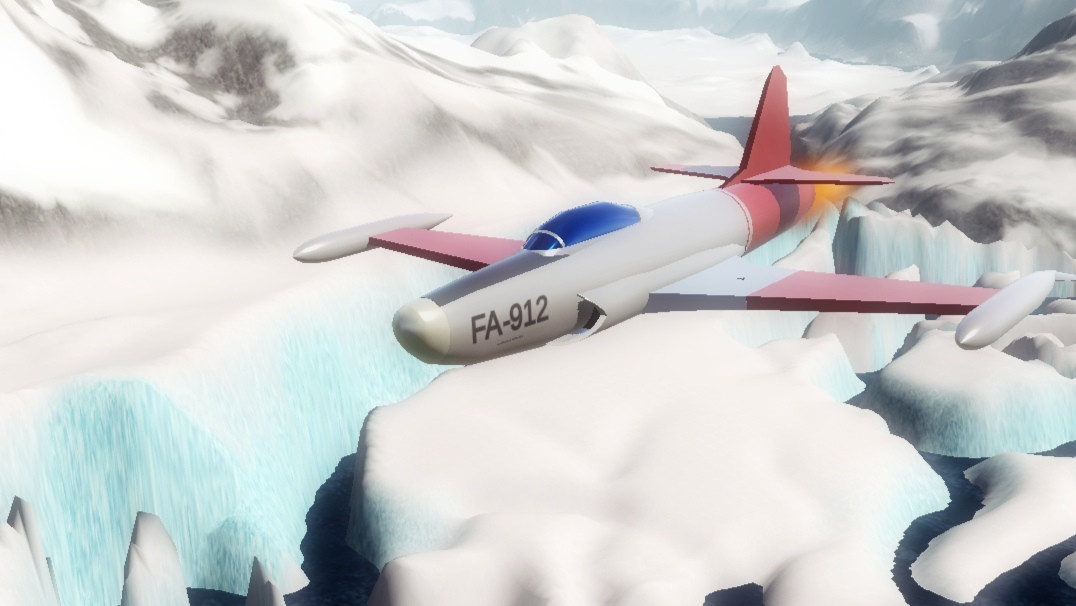
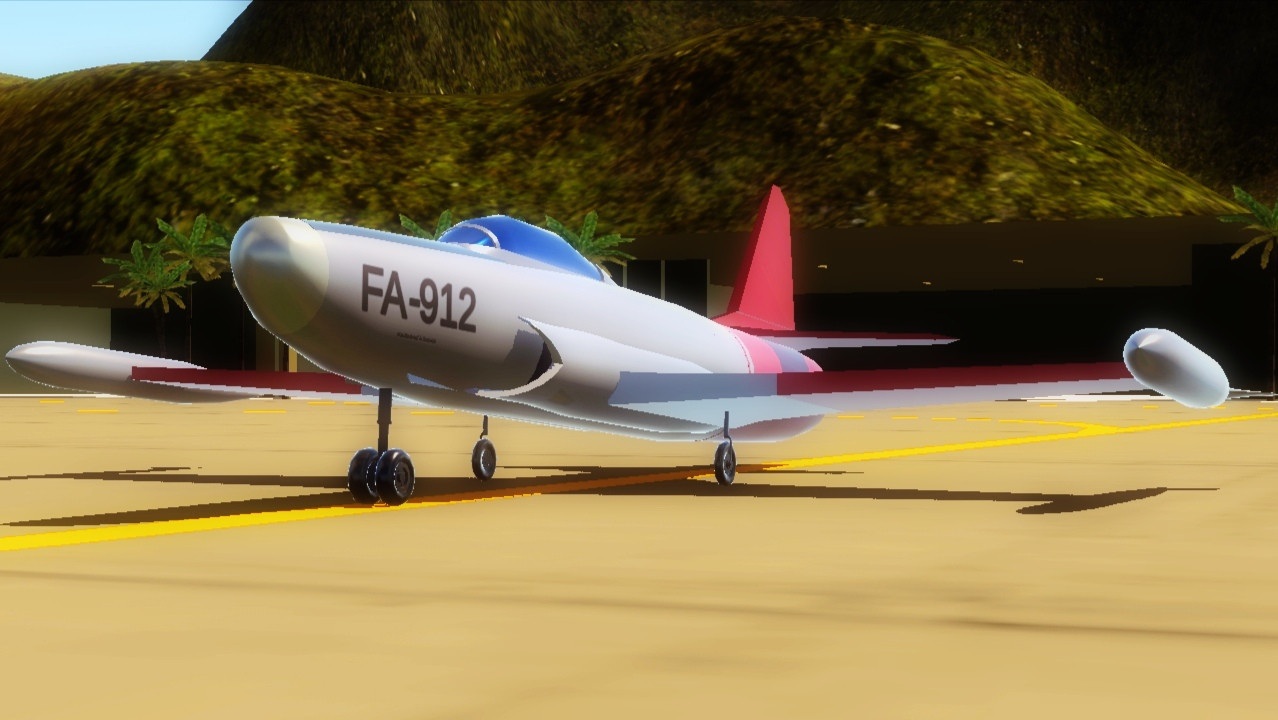
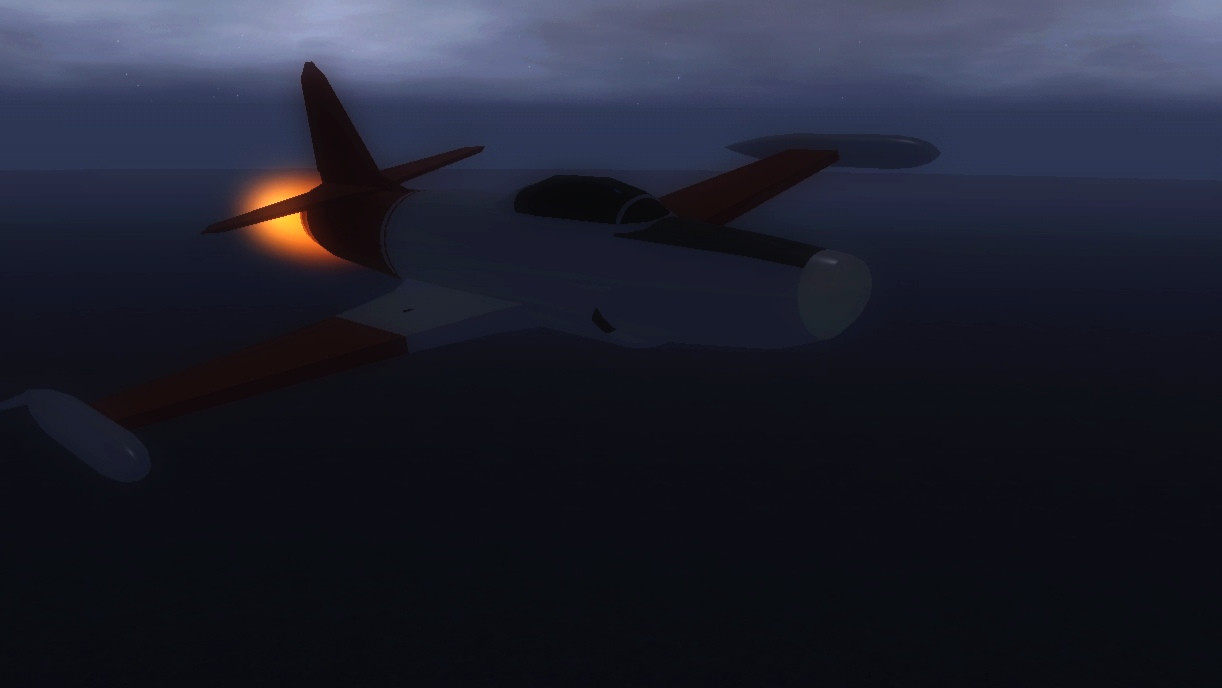
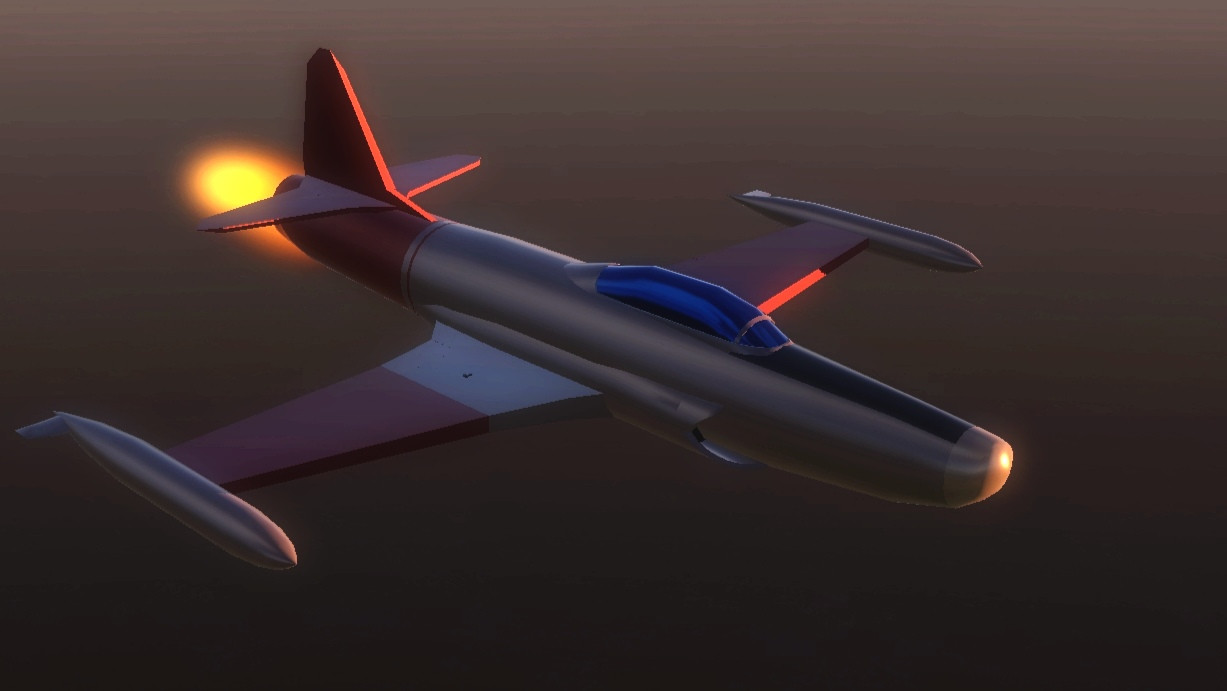
The color scheme is inspired by this picture
I hope you liked the project! but im okay if you dont like it

SEE YALL AT THE END OF THE YEAR
Specifications
Spotlights
- WinsWings 2.1 years ago
General Characteristics
- Predecessor Classic Jet Challenge 12.25.23 [CLOSED]
- Created On Android
- Wingspan 41.5ft (12.6m)
- Length 40.2ft (12.3m)
- Height 14.1ft (4.3m)
- Empty Weight 7,019lbs (3,183kg)
- Loaded Weight 22,639lbs (10,268kg)
Performance
- Power/Weight Ratio 1.489
- Wing Loading 82.1lbs/ft2 (400.7kg/m2)
- Wing Area 275.8ft2 (25.6m2)
- Drag Points 3778
Parts
- Number of Parts 84
- Control Surfaces 9
- Performance Cost 351

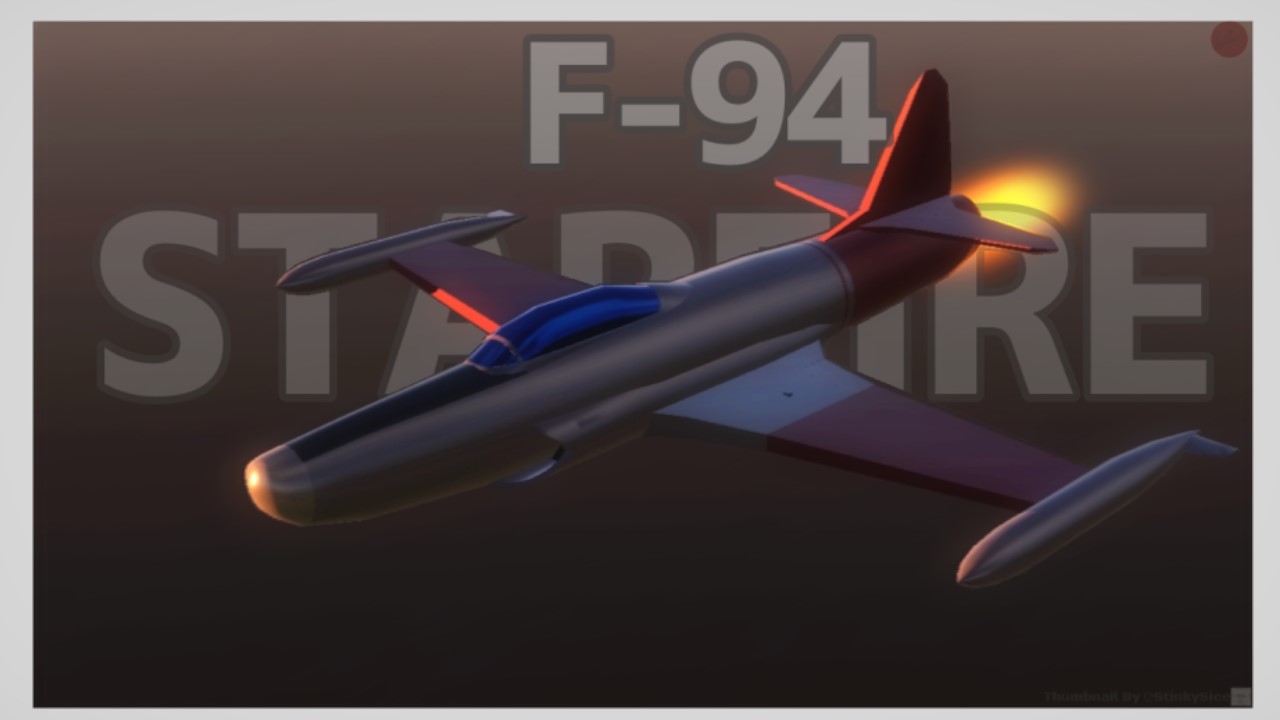
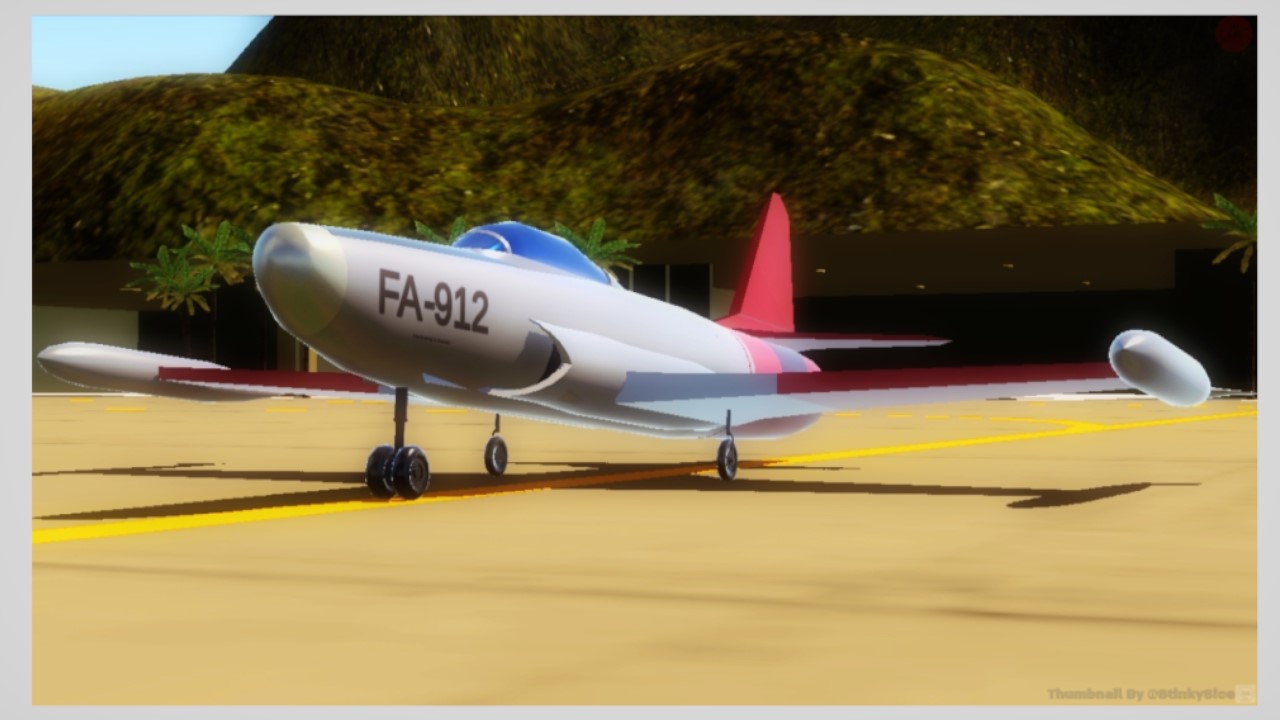
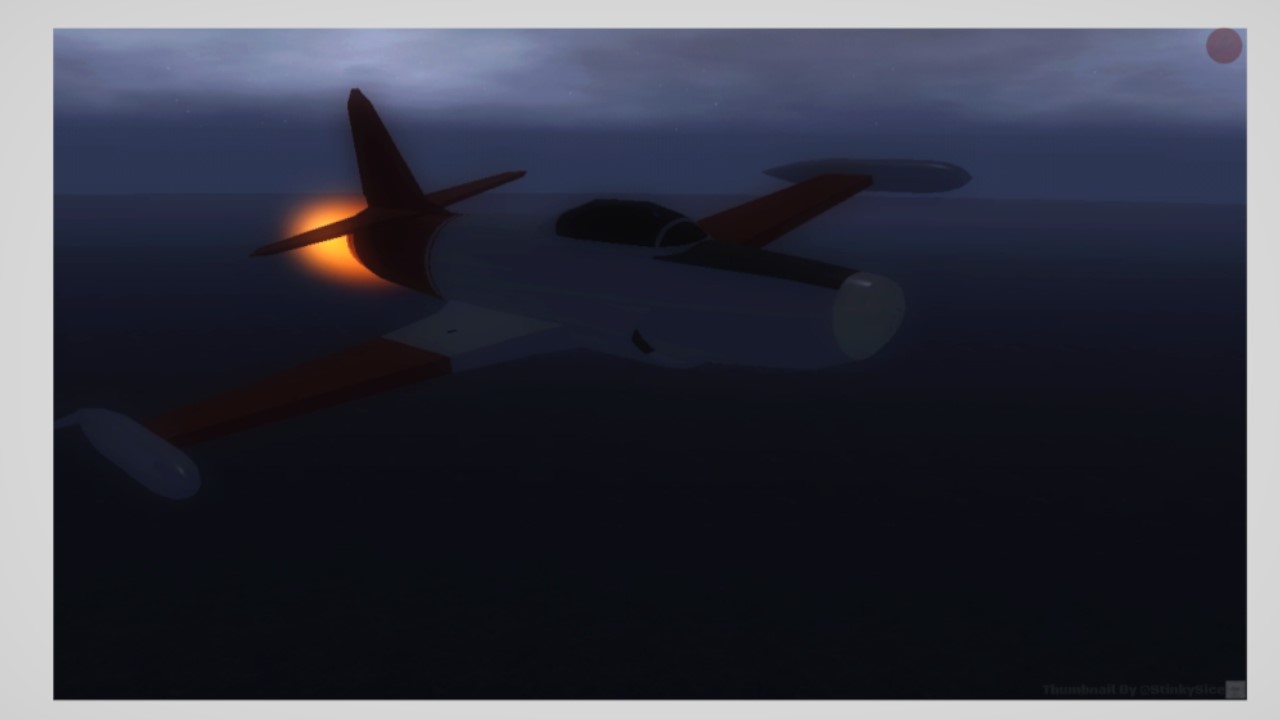

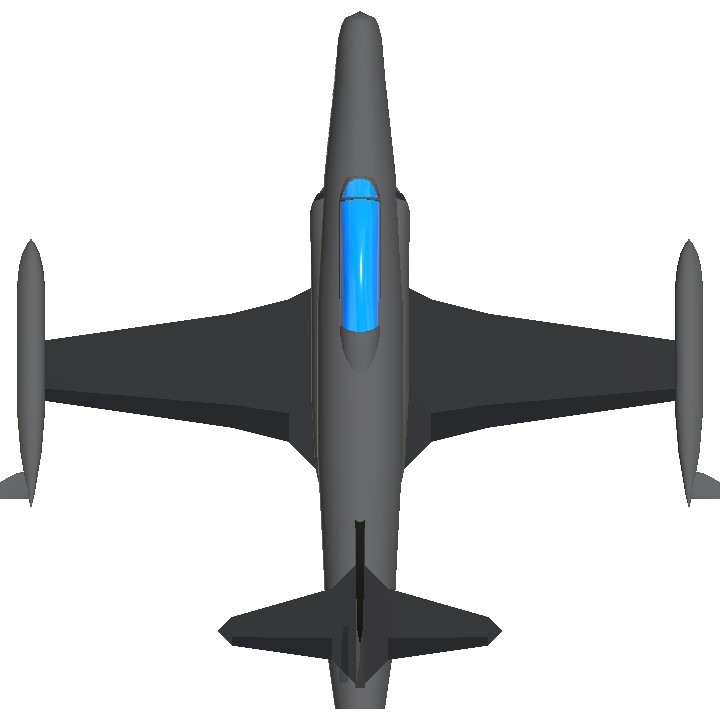
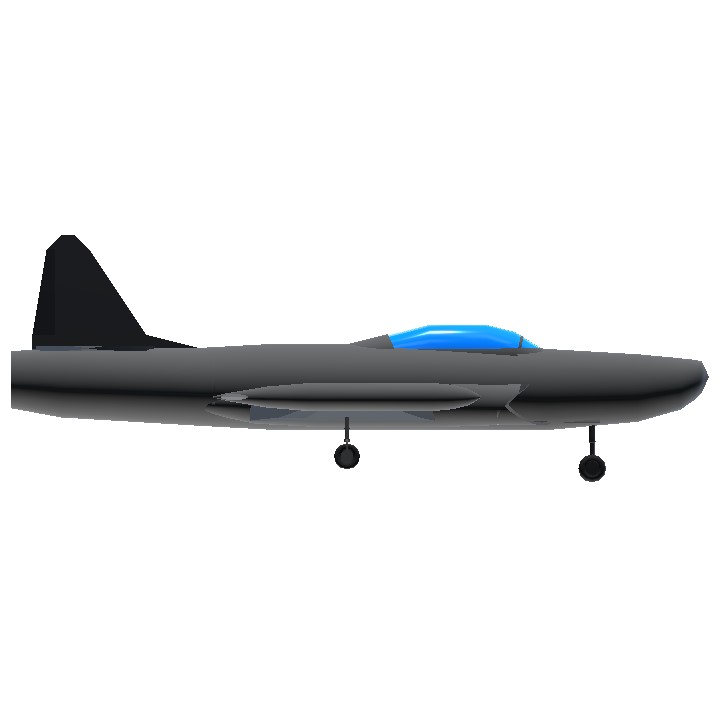

This is just a F84 with a F80 Intake, and I love it
A superlative build! Thank you!
Greetings from Side 3!!! 😉
great build, nice story line, thanks